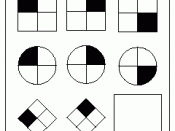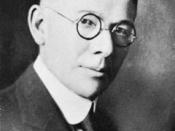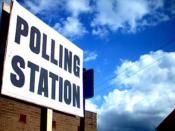I. The Nature & Measurement of Intelligence
A. The Origin of Intelligence Testing
1. In 1904, Alfred Binet was appointed to a commission in Paris to study & recommend procedures for educating mentally retarded children. The commission recommended that mentally retarded children be admitted to a special school, but only after an educational & medical examination. The test was designed to measure everyday classroom activities, including memory, attention, comprehension, discrimination, & reasoning.
2. In 1916, Lewis Terman of Stanford University adapted the test, & it became an extremely popular intelligence test known as the Stanford-Binet.
a. Terman added a global measure known as the intelligence quotient (IQ).
b. Note: Although many texts still report the old IQ formula, it has only historical interest now because both the Wechsler & modern Stanford-Binet use deviation scores.
3. The history of the intelligence test illustrates why it predicts academic performance better than job performance, income, or any other variable.
a. It is probably better called a test of scholastic aptitude or social ability.
b. Binet never endorsed its use to limit opportunities for students, but many have felt that intelligence test scores have sometimes been misused to limit opportunities for rather than to create them.
B. What Traditional Intelligence Tests Measure
1. In 1904, psychologist Charles Spearman noticed that performance on different mental abilities tests was related (a general or g factor) but varied somewhat from one specific test to another (a set of specific or s factors), as rankings of individuals changed somewhat from test to test.
2. This two-factor theory of intelligence became popular as a way to describe what intelligence tests measured: a general ability, plus one or more specific factors.
3. Individual intelligence tests still reflect the influence of Binet & Spearman in their construction.
a. They predict school...


